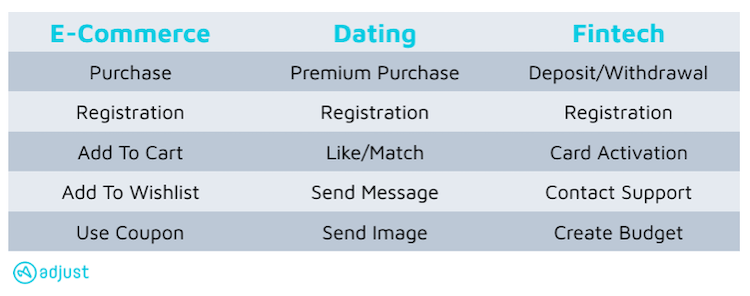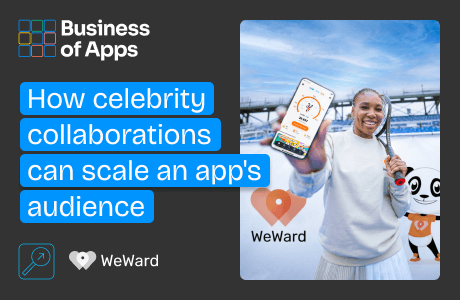The standard practice for calculating LTV is fundamentally flawed. Expressed mathematically as LTV = ARPU x1/Churn, marketers using this calculation are equating the value of a user solely with the revenues they generate. This short-sighted approach blinds you to the other ways your audience can (and does) provide value. What’s more, the singular focus on revenues has contributed to a widespread lack of confidence in this measurement. Only 32% of businesses have a clear view of their customers’ lifetime value (LTV). It’s confusion that impacts app marketers across all app categories, and a situation that no one can afford.
LTV is the driving KPI in the budgeting strategies of some of mobile’s biggest players. It refers to the value a customer generates during the time that they interact with your app. To gain a greater and more accurate understanding of customer LTV, we need to appreciate that the time users spend in apps (and the activities they undertake) generate value that is as good as cash–if not better. This is why we need to redefine the LTV equation to include the user events that create additional value for the app. In practice, this means assigning values to in-app events (such as likes and matches in a dating app, for example) and external events (such as shares in a gaming app). Start by looking at your app and mapping how users interact with it. The events that generate the most value are linked to the actions your app supported and will naturally depend on your app category.
Custom values will provide the bigger picture
Take the example of a dating app. Likes, matches and messages are all events that contribute to the success of the app. They add significant value even though the user didn’t spend in the app. Similarly, the value of the most popular users is money in the bank–even if they have no incentive to purchase a premium account. Simply by staying active in the app, these users create a better experience for everyone, encouraging other users to spend more time or money in your app–or both. You can measure this value, in the form of in-app events undertaken by your other users, and apply this logic to calculate a more accurate LTV.
Here are some examples of events that you can include, depending on your app category.
Source: Adjust
Identifying the events relevant to your app and setting a value to each is just the first step. You can then use a mobile measurement provider (MMP) to gather data for those in-app events and calculate a more inclusive (and accurate) LTV: [Custom Value Total] x1/Churn. Working with an MMP that reports device-level cost data (not just the aggregated cost) allows you to calculate LTV with perfect accuracy.
Returning to the example of a dating app, imagine a scenario where each event is assigned a value. Purchasing the app premium service generates a value of $5/mo; in-app advertising comes in at $1/mo, interacting with another user is $0.1/user and $0.5/friend for inviting a friend.
Let’s say that, on average, the users you acquired from Network A churn after three months (+$3 for advertising exposure). Within that same time, 10% of users you acquired purchase a premium service (+$0.50). All users invite an average of 1 friend to the apps (+$0.50) and interact with others ten times (+$1). Do the math, and your custom LTV for Network A users is $5. Compare this to users you acquire from Network B, who also churn after three months (+$3) with 10% purchasing the premium service (+$0.50). They invite an average of 0.1 friends ($0.05) and only interact with others two times (+$0.20). This custom LTV for Network B users comes out at $3.75.
The takeaway: Network A and Network B are not generating equal value. Despite the same churn rate and in-app revenue, using custom events to calculate LTV shows the true value of your users. Knowing this equips you to focus campaigns and choose network partners to ensure you acquire the users who matter most for your app–because they bring the most value. It’s a critical difference that you would not be able to see–or calculate– if you only use the standard approach to LTV measurement. Both networks would appear to have the same LTV.
Using this approach equips you with the data and the means to evaluate each network according to the value of the users they deliver to your app (according to the in-app activities you deem relevant). It also allows you to scale ad spend to acquire more users from the best performing networks. Finally, factoring this more inclusive LTV calculation into your marketing strategy provides you with greater insight into how you can allocate ad spend to acquire high engagement (high value) users. However, don’t make the mistake of mixing up your revenue with your in-app LTV calculations.
Learning from a more inclusive LTV
Looking at the custom LTV of each demographic and time zone will provide a more accurate measurement of when and where users are generating the most value for your app, and at what cost. This approach also allows you to compare demographics against LTV to focus campaign efforts. Imagine a scenario where your French user base is highly engaged but low-spending. You can compare this audience to your German users, who engage with fewer users but are more likely to make a purchase. You probably already suspected that the latter is the audience that actually generates more value–but now you can be certain because you can accurately measure those margins.
Fire Up Your Growth!
Moburst propelled leading brands like Google, Reddit, and Uber to the next level. Let’s ignite your Success journey today!
Claim Your FREE Growth Fuel!To acquire and keep users with high engagement patterns, it’s much the same procedure. Now that you know who your high-value users are, and the events you measure to determine this in the first place, you can focus campaigns to retarget and re-engage to gain the most valuable users for your app. This doesn’t just generate value; it saves money in the end. Overall, it costs five times as much to acquire a new customer as it does to retain existing users, yet only 12% of marketing budgets go towards post-acquisition strategies such as engagement and retention. Clearly, marketers risk leaving money on the table by overvaluing these strategies.
This custom LTV can also be combined with cost data to calculate custom return on advertising spend (ROAS) – improving the measurement most marketing professionals still rank as most important. By understanding your true ROI (a metric that you have refined to include valuable in-app events), you have the added benefit of visibility into how payouts to each network have contributed to your company goals.
LTV is often described as “the most important metric for measuring clients,” and this won’t change anytime soon, which is why you need to make your LTV as accurate as possible. By taking the extra steps to include in-app events when calculating LTV, marketers can avoid undervaluing the users who are the lifeblood of their app and the driver of their app success. Optimizing this critical measurement leads to a better-informed approach to managing your campaigns, creative and targeting strategy. This requires a superior LTV measurement, one that factors in the value of users who transact and interact. You need to include both in your strategies to acquire the users who matter most for your app. And, because LTV calculations improve over time, it’s a case of the sooner, the better.











